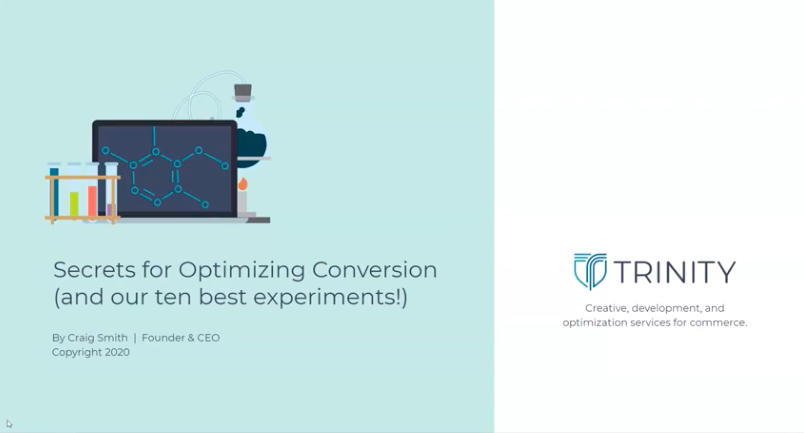On-site search is a valuable tool for converting customers on your website. Your site visitors often turn to it when they can’t find what they want — or don’t want to waste their time trying. People use on-site search when they are looking for specific items or want to limit the results to certain brands, topics, and items. Ecommerce companies can either improve on-site search to help these customers or leave them to grow increasingly frustrated with their online experience.
You don’t need to be an eCommerce SEO expert, web developer, or content guru to improve on-site search performance. Here are 10 ways you can make it easier for your customers to find what they need.
1. Optimize Your Search Bar
If customers aren’t using your on-site search as often as they should, the problem might lie in your search bar. If your search bar is hard to find or difficult to use, your customers might try to navigate the site on their own, or worse, bounce to a better brand.
The designers at UX Planet shared a few best practices you can follow to improve your search bar capabilities. You can run through their checklist to see what you’re doing right and where you are going wrong. A few of their suggestions include:
- Prominently display your search bar on both mobile and desktop pages.
- Provide a separate search button next to the search text box.
- Put the search bar on every page.
- Place the search bar in the upper right corner, where the majority of users expect to find it.
A few of these features might slip your mind during the design process, leaving users confused as to where and how to use your search tool.
2. Add Search Ahead or Autocomplete Options
If you are using an API or plug-in for your search bar, make sure autocomplete and search ahead options are enabled. Most internet users will expect your website to have autocomplete options at this point. In fact, 82% of the top eCommerce websites offer autocomplete options. Autocomplete can help searchers spell items correctly or find the pages they want without having to ever visit a search page.
Your autocomplete options can select words that customers might want to search for or pages and links they would find useful. Look to Google Chrome to see a brand that does it well — the site recommends search terms and past URLs that you have visited in the search bar.
3. Implement Product Filters
Product filters are essential for eCommerce companies, regardless of whether your brand has a few dozen products or several thousand. Product filters allow users to limit what shows up in the search results. They might include limitations based on size, brand, material, price, or color.
Product filters reduce the clutter and increase the chances that your customers find exactly what they want. If they filter out 70% of your products before they even type a word into the search bar, they have a significantly higher chance of seeing the right information than if they searched through all of your products.
Just make sure customers can search for specific words or phrases within the filters they set. You could easily create a frustrating experience when your site visitors set up their filters and then lose them searching in the main bar.
4. Provide Suggestions in Your Search Landing Pages
If your site users can’t find what they’re looking for with your autocomplete options, consider offering suggestions on the search result landing pages. Adding a “Did You Mean,” header at the top of your page followed by suggestions for similar words, solutions to typos, and category pages can help customers find what they want before they start combing through the search options.
The goal is to improve on-site search by understanding what your customers want and how they look for it. Correlating on-site search terms with the items or pages your customers look at can improve these results over time.
5. Set Up an Advanced Search Option
Along with creating filters that customers can use when they’re browsing your eCommerce inventory, set up an advanced search button with specific words, phrases, and options for audiences to choose from.
Twitter has a great advanced search model for filtering through tweets, accounts, and topics. Users can search for specific phrases or words, allowing them to set strict results options. While Twitter isn’t an eCommerce site, you can model your advanced search tool off of this example. Investing in a similar tool for your brand can help customers find exactly what they want by removing the clutter.
6. Use Tools That Accept Variants and Misspellings
Even before the internet and world of emojis, abbreviations, and acronyms, humans were bad at spelling. There are deep psychological processes that go into forming words correctly, and there are some words that more people misspell that others. One of the easiest ways you can improve on-site search results is by identifying these typos and helping customers correct them. Any eCommerce site that sells Caribbean vacations, macaroni salad, or refrigerators likely understands how varied customer spelling can be. In fact, some customers expect your system to catch these typos and won’t even bother writing them correctly.
Along with misspellings, make sure your website accounts for word variants. For example, your customers might look for rain boots by searching for wellies or galoshes. If your search tool can pick up on what they really mean, then your customers will easily find the products they want.
A highly advanced on-site search tool will be able to read the word “golashes,” understand that the user meant “galoshes,” and serve results for rain boots.
7. Develop Landing Pages Based on Search Terms
Strategic content marketers will use search terms to develop product landing pages to help customers. For example, if your customers use on-site search to look for specific items (like Under Armour rash guards) then you might improve on-site search and conversion rates by creating a specific landing page for those products.
Landing pages are typically created for products and brands that have high demand levels. Use on-site search and your sales numbers to tell you what items have the highest demand and need their own pages to guide buyers.
8. Allow Saved Searches
If you have big-ticket items with longer buying processes, make it easy for customers to return to your website by letting them save search results. Saved searches might include pages they looked at, terms they used, or filters they set up. When customers return, their searches are still there so they can consider converting.
Expedia does a great job of this with their scratchpad. People often wait several days before they book flight or trip. They might search for a few places and compare prices, then bounce to think about the budgets or consult with friends or family. A few days or even weeks later they might return. By saving their searches, Expedia moves customers deeper into the sales funnel so it only takes a few clicks to book.
9. Improve On-Site Search With Data
On-site search is an ongoing project that you will likely never be finished with. As long as new products are placed on your website and old ones are removed, your customers will search for items and struggle with a variety of new keywords.
Some eCommerce brands create on-site search data reports on a weekly or monthly basis depending on their business size. These reports help them understand the average number of searches that come through on a regular basis and what percent of customers find what they are looking for. These brands might even use recording tools like Crazy Egg or Mouseflow to see what customers looked for before they used the search bar.
This data can alert you to significant problems with your search results pages. If there is a spike in searches or drop in conversion rate, you may have a bigger issue on your website than you realize.
10. Prepare for Voice Search
Finally, prepare for a wave of long-tail keywords, convoluted phrases, and full-length questions regarding your brand and products. Brace yourselves: voice search is coming. Voice search shopping markets are expected to grow from $2 billion to $40 billion by 2022. Voice search is going to have a massive impact on your business, and you can improve on-site search by preparing for more long-tail questions and making your system responsive to these phrases.
Make sure you stay up-to-date on the latest voice search best practices and look for increases in long-tail phrases in your search. If your search tool doesn’t show customers what they want, then you need to make some changes to your website or search API.
It’s up to the SEO team, content team, web maintenance team, and marketing team to all work together and improve on-site search. Everyone benefits when customers can find the information they want quickly and clearly.
Contact Trinity Insight to improve your on-site search and help your customers. We can conduct a full user experience audit to see where you are losing customers and how you can win them back.





